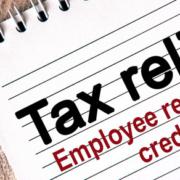Work Opportunity Tax Credit extended through 2020
If you’re a business owner, be aware that a recent tax law extended a credit for hiring individuals from one or more targeted groups. Employers can qualify for a valuable tax credit known as the Work Opportunity Tax Credit (WOTC).
The WOTC was set to expire on December 31, 2019. But a new law passed late last year extends it through December 31, 2020.
Generally, an employer is eligible for the credit for qualified wages paid to qualified members of these targeted groups: 1) members of families receiving assistance under the Temporary Assistance for Needy Families program, 2) veterans, 3) ex-felons, 4) designated community residents, 5) vocational rehabilitation referrals, 6) summer youth employees, 7) members of families in the Supplemental Nutritional Assistance Program, 8) qualified Supplemental Security Income recipients, 9) long-term family assistance recipients and 10) long-term unemployed individuals.
Several requirements
For each employee, there’s a minimum requirement that the employee has completed at least 120 hours of service for the employer. The credit isn’t available for certain employees who are related to the employer or work more than 50% of the time outside of a trade or business of the employer (for example, a maid working in the employer’s home). Additionally, the credit generally isn’t available for employees who’ve previously worked for the employer.
There are different rules and credit amounts for certain employees. The maximum credit available for the first-year wages is $2,400 for each employee, $4,000 for long-term family assistance recipients, and $4,800, $5,600 or $9,600 for certain veterans. Additionally, for long-term family assistance recipients, there’s a 50% credit for up to $10,000 of second-year wages, resulting in a total maximum credit, over two years, of $9,000.
For summer youth employees, the wages must be paid for services performed during any 90-day period between May 1 and September 15. The maximum WOTC credit available for summer youth employees is $1,200 per employee.
Here are a few other rules:
- No deduction is allowed for the portion of wages equal to the amount of the WOTC determined for the tax year;
- Other employment-related credits are generally reduced with respect to an employee for whom a WOTC is allowed; and
- The credit is subject to the overall limits on the amount of business credits that can be taken in any tax year, but a 1-year carryback and 20-year carryforward of unused business credits is allowed.
Make sure you qualify
Because of these rules, there may be circumstances when the employer might elect not to have the WOTC apply. There are some additional rules that, in limited circumstances, prohibit the credit or require an allocation of it. Contact us with questions or for more information about your situation.
© 2020












